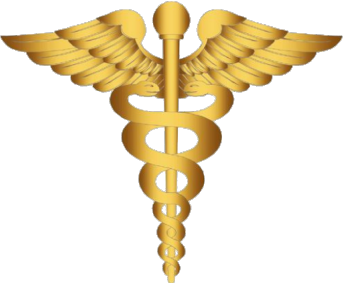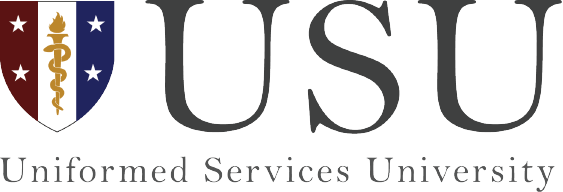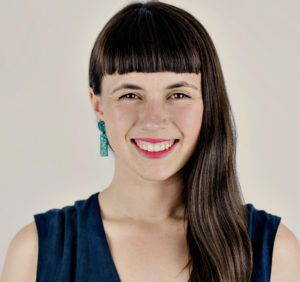Physical Address
As a medical student, there are two main paths to choose from in order to become a military physician: the Health Professions Scholarship Program (HPSP), and the Uniformed Services University of the Health Sciences (USU). This chart is a summary of what each program offers. For more information contact a recruiter.
Uniformed Services University of Health Sciences (USU)
The Uniformed Services University of the Health Sciences (USU) was founded to be “America’s medical school for uniformed physicians.” Located in Bethesda, Maryland, USU looks for aspiring medical students with a passion for service who thrive in a collaborative environment.
Since all USU students are active-duty service members, their education is paid for by the U.S. government, and they receive a military salary and benefits, including a housing allowance. The USU accepts both civilian and military applicants for commissioning into the Army, Navy, Air Force and U.S. Public Health Service.
Life at USU – Our school of Medicine
Listen in as USU students share their experiences at America’s Medical School.
Listen in as USU students share their experiences at America’s Medical School.
BURNHAM: when I think about what it means to be a student at USU it comes back to this idea of like a shared purpose and a shared mission. It’s a really welcoming place and I’ve made a lot of really awesome friends and it really does kind of have that kind of like home feeling with all of our classmates and we hang out in the student lounge, and we study together in the library and definitely a very like community feel. It’s a really driven group of people so everyone’s you know working very hard and also having a lot of fun. [Music] HARPER: Everybody here has a different walk of life that they came from. Myself I came from prior service as a lab tech where I kind of just worked in the lab but i’ve met people who have gone to nepal and spent years there living amongst the people there and really speaking the language and getting a chance to really understand the cultures and what they learned there they bring back and I learn it helps me to be more empathetic for patients that i don’t understand or cultures I don’t understand. We have students from Hispaniola that I never even thought about is you know coming from here being that it’s the dominican republic and Haiti at the same time which you have a culture that’s mixed and you get a chance to just understand different things about different people and how how they lived how they got here and it kind of helps motivate you and understand that your story is just as important as the next person’s story. We’re a team here when everybody succeeds we the whole team succeeds if one person is struggling, we’re going to make sure that they catch up and and they succeed as well with us. [Music] BURNHAM: All of your professors and all of your classmates are very much here for you and here to help if you need anything so it feels like a collaborative um push to like learn and and to figure things out and to really kind of like understand how the human body works and how being a doctor works and they are making sure that we have like the skills and the like emotional competencies and capabilities to really be exceptional providers because we’re going to be the ones treating not just them but like their families. When I go to the library to study it’s not just so that I can learn this so that I um you know can get a test score. It’s so that I can learn this so that I can be a better doctor that I can you know serve my country and serve um people who are making incredible sacrifices every day of their life and I think that sense of vision and mission and collaboration is really like permeates everything we do at USU. [Music] HARPER: Any support that you’re looking for regardless of your ethnicity your background your family situation you’re going to find it here. The military is a family, and we really mean that so when you sign that paperwork here you’re joining a family not join not just joining a medical school. [Music]
School Curriculum
Unlike Health Professions Scholarship Program HPSP students, you will immerse yourself in the military lifestyle right away. You will not be pulled away from medical training for deployments, but you will wear a military uniform to class, and you will be on active duty through all four years of school. Most lectures are recorded and optional to attend while all labs and small group discussions have mandatory attendance.
The USU was founded with a curriculum designed to advance health and science education for students as they prepare for the challenges of military medicine. In 2012, the school revamped its curriculum using a systems-based model adopted by many other medical schools. The current coursework design is called “Molecules to Military Medicine.” This curriculum connects basic and clinical sciences to military leadership and training over a four-year period. After 18 months of on-campus academics, students also benefit from clerkships that begin after the first 16 months of instruction, which help strengthen their knowledge and leadership skills in actual hospital settings.
Operation Bushmaster: Teaching Leadership
Catch fourth-year USU students in action during Operation Bushmaster.
Medical School Programs
As a medical student, there are two main paths to choose from in order to become a military physician: the Health Professions Scholarship Program (HPSP), and the Uniformed Services University of the Health Sciences (USU). This chart is a summary of what each program offers. For more information contact a recruiter.
Medical Program Comparison Chart
Program


Location


Tuition & Benefits
- Tuition paid by Service branch
- 45 days’ pay & signing bonus
- Living stipend
- No tuition costs or fees
- Full salary & benefits
- Housing allowance
Training

![]()
Service Commitment
![]()
![]()
*For the first 18 months, and then students will be located at major military facilities around the United States for the remainder of medical school.
**The U.S. Navy has a three-year option, with three-year minimum service commitment.
Military Status During Medical School
The two main differences between HPSP and USU are your status in relation to the Military and type of school. HPSP students are commissioned as officers in the Individual Ready Reserve (IRR), whereas USU students are active-duty officers, so they will spend more time in a military environment. Either way, medical students are expected to finish their training in the same amount of time as civilian students and will not be pulled away from medical training for deployments or similar military responsibilities.
Part-Time Service Options
If you are interested in joining a Reserve or Guard component, you can apply for the incentive-based Medical and Dental Student Stipend Program (MDSSP).









